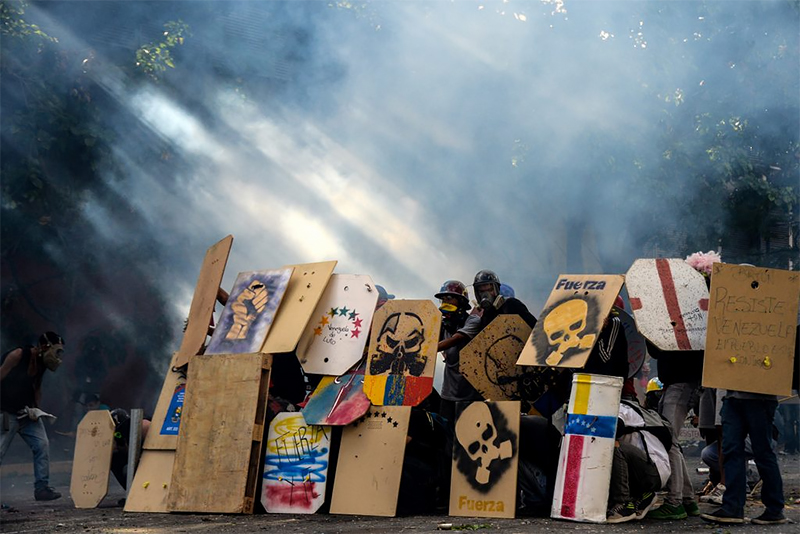From 7 to 13 October Bayeux will be hosting the 26th Bayeux Calvados-Normandy award for war correspondents. The town, the Department of Calvados, the Normandy Region and their partners are organising a unique event devoted to a singular profession - that of the war correspondent. Through this profession, the event will be seeking to decipher past, current and alas future conflicts via three debate evenings, an evening award ceremony, eight original exhibitions, screenings of films and documentaries, activities for school children, a book fair and the unveiling of a commemorative stone at the Reporters' Memorial.
Witnesses to both major and little known conflicts, men and women ranging from the most eminent senior correspondents to reporters beginning their careers will all be pressing the pause button in the capital of the Bessin region. They will be there to shed light and provide insight into the darkest regions of the planet and award prizes to the best photographic, television, radio and print reports; to raise questions about and explain what their work is for, and to pay tribute to colleagues who have been imprisoned, killed or have disappeared.
Last year's anniversary edition will be remembered by 40,000 people and provided a clear demonstration of the need to create a resource centre. The content of this years event, whose president is the British photojournalist Gary Knight, will be further strengthened with a virtual reality experience provided by the BBC and an additional exhibition. The programme includes: 40 years of war in Afghanistan, an exhibition of testimonies from Aleppo, the 30th anniversary of Tiananmen Square, a focus on Venezuela, a country which is also the subject of a debate evening, and a tribute to the work of Alfred Yaghobzadeh on walls around the town, designed to make passers-by stop and think.
In the face of news and information being disseminated more and more rapidly, we believe more than ever that young people are a crucial audience. We are organising residencies, the 15-Year Olds' Perspective, HCR-Ouest-France encounters, an AFP day, the Normandy Region Prize awarded by students and apprentices, Prix Bayeux classes, and encounters with the Dysturb collective, all of which are opportunities to provide education about news and information, raise awareness and awaken curiosity in young people who are discovering the world and, like ourselves, trying to gain a better understanding of it.
Exhibition: Afghanistan, the world's battlefield
Curator: Jean-Pierre Perrin
Designer: Laurent Hochberg
Iconography: Maral Deghati
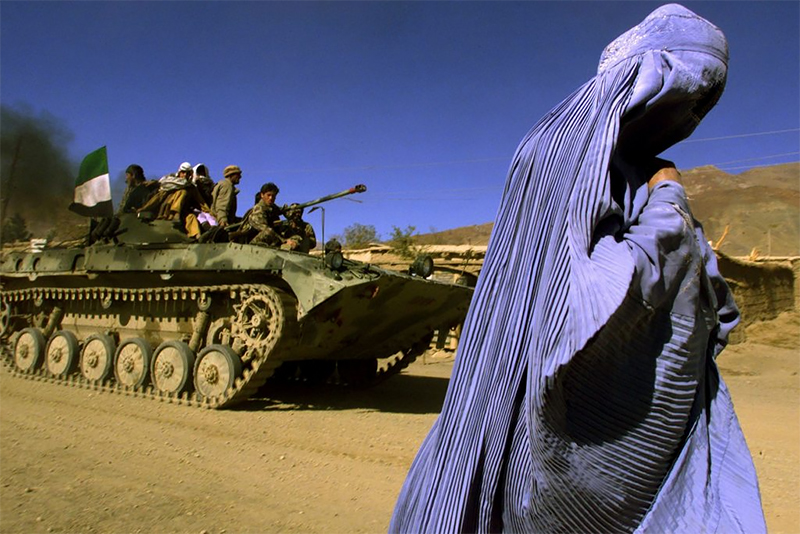
© Yannis Behrakis / Reuters
Afghanistan has been at war since 1978. The conflict originally began as a peasant rebellion against a communist coup, a sort of regional counter-revolutionary war that turned into a crucial episode of the Cold War with the Soviet invasion of December 1979.The invaders were punished: the Soviet Union collapsed. But Afghanistan never recovered either. It took on a veil of shadows when the Taliban burst in and then became the promised land for international jihad, culminating in the attacks on 11 September 2001.Today it is falling apart, with the power of Islamic radicalism on the increase, security forces exhausted, unbridled corruption, criminal networks infiltrating the whole of society and the emergence of movements demanding autonomy. It has also become a battlefield where both regional and great powers come to settle scores.Ever since the beginning of the catastrophe a succession of reporters - whether photographers, print, radio or video journalists- have been in the country to tell the story of each explosion, to bear witness to the suffering, the cruelties and the upheavals endured by a population which often finds itself trapped in the midst of overwhelming forces. It can be seen in this exhibition which also showcases the work of Afghan photographers, allowing us to see the conflict from other viewpoints. Afghan women have paid an extortionate price in this endless conflict: they are a major presence in this exhibition which is dedicated to them.
A collective exhibition by Doctors without Borders : Gaza: A people on the edge
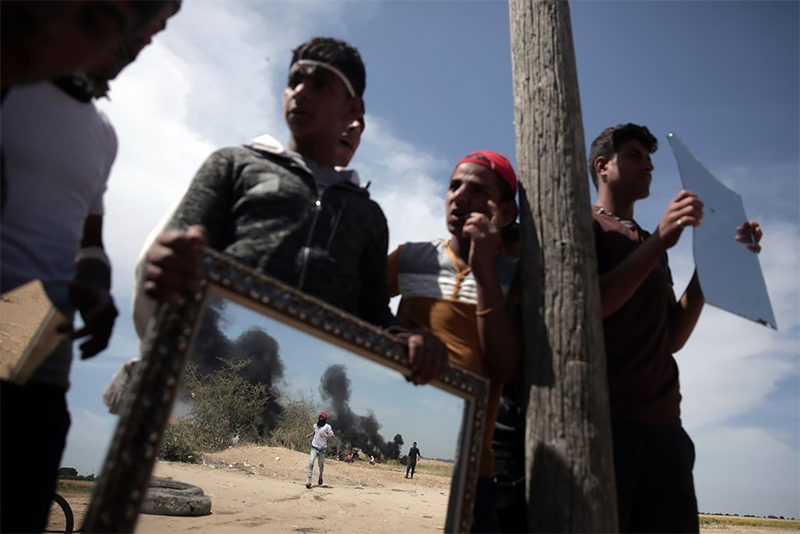
This exhibition shows different perspectives on the Great March of Return, the protest movement which has been punctuating life in Gaza for over a year. The Israeli Army's bloody repression has resulted in thousands of wounded, thousands of shattered lives. It is an unprecedented crisis further weakening a territory battered by years of war and blockades.Every year the March of Return commemorates the Nakba, the Palestinian exodus of 1948. 2018 was the 70thanniversary of the event, and the demonstrations along the length of the security barrier separating Gaza from Israel were supposed to go on for a month and a half. Although the Israeli Army responded brutally, firing live bullets into the crowd, the demonstrations have continued ever since, making the border look like a front line. Hundreds of demonstrators have been killed and almost 7,000 people are suffering from complex injuries requiring long-term treatment. Doctors without Borders, have been in the Gaza Strip since 2000 and have stepped up their operations in order to provide treatment for many of the wounded. But the needs are huge and the health system is at breaking point. Many victims are left to their fate and at risk of infection or amputation. It is a healthcare bloodbath with a terrible impact on a society already in agony. The Gaza Strip has been blockaded since 2007 when Hamas took control of the territory. There is only a trickle of entries and exits. The economy has collapsed, the rate of unemployment is one of the highest in the world and the population is primarily dependent on humanitarian aid. Power cuts and problems with the supply of drinking water add to the difficulties of a daily life with no prospects for improvement.
Photographs: Heidi Levine / SIPA Press, Jack Guez / AFP,
Khalil Hamra / AP, Laurence Geai, Mahmud Hams / AFP, Menahem Kahana / AFP,
Mohamed Abed / AFP, Michael Bunel, Said Khabtib / AFP
Exhibition: 40-year career: the work of Alfred Yaghobzadeh in the streets of Bayeux
Mirror to the world
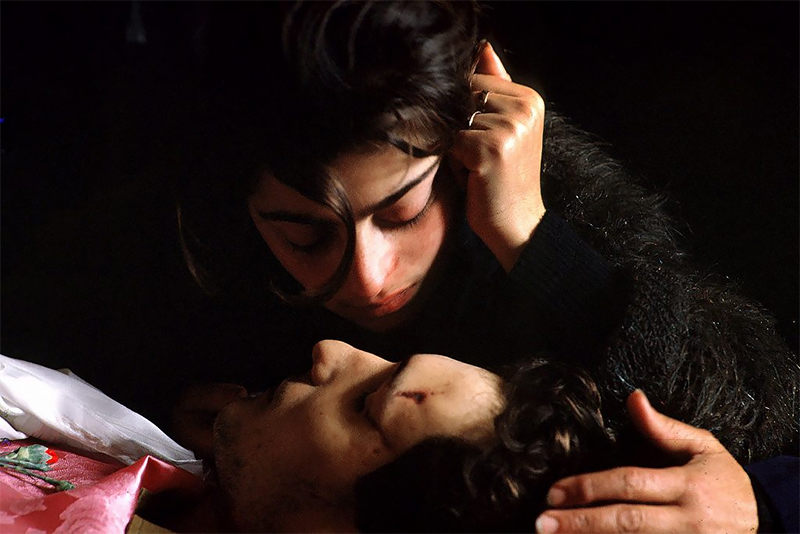
Alfred Yaghobzadeh was born in Tehran, Iran in 1959, to an Armenian father and Assyrian mother. In 1979 the Iranian Revolution interrupted his studies in interior design and he turned instead to photographing the turbulent streets of Teheran. Aged nineteen, he reported the devastation of the Iran-Iraq war and this formative experience set the agenda for the subsequent course of his career, both in the choice of subjects covered as well as the agencies that represented his work. He began with Associated Press, followed by the Paris-based agencies, Gamma and Sygma. He spent two years in Lebanon for Newsweek during the civil war before finally joining Sipa Press where he remained for twenty-nine years.Alfred's assignments have taken him around the world, reporting on breaking news and major conflicts in the Middle East, Central Asia and Africa. He was wounded and taken hostage 55 days in Lebanon's civil war, and some years later seriously wounded in Chechnya that he was lucky to survive. Additionally, he has reported on humanitarian crises and politics in several countries. Whatever he photographs he does so with remarkable professionalism and a relentless energy that has produced a rich archive.His work has received the World Press Photo first prize. His photographs have featured on the covers and pages of numerous international publications including Stern, Time, Geo, Newsweek, Paris Match, Elle, Figaro Magazine, National Geographic, Life, El Pais, The Guardian.
Multimedia AFP exhibition:
Venezuela: Collapse without end
Venezuela has plunged over the past five years into its worst ordeal in modern times: a seemingly interminable political crisis with international repercussions. The country has the world's biggest crude oil reserves but its people are suffering from an economic collapse that has led to hyperinflation, shortages of food and medicine, violent crime, the collapse of basic services and affronts to human rights. The crisis has sparked demonstrations that have degenerated into violence and has prompted an unprecedented wave of emigration, with more than one Venezuelan in 10 fleeing the country.
Exhibition: Nicole Tung
As strong as the war, as soft as the peace
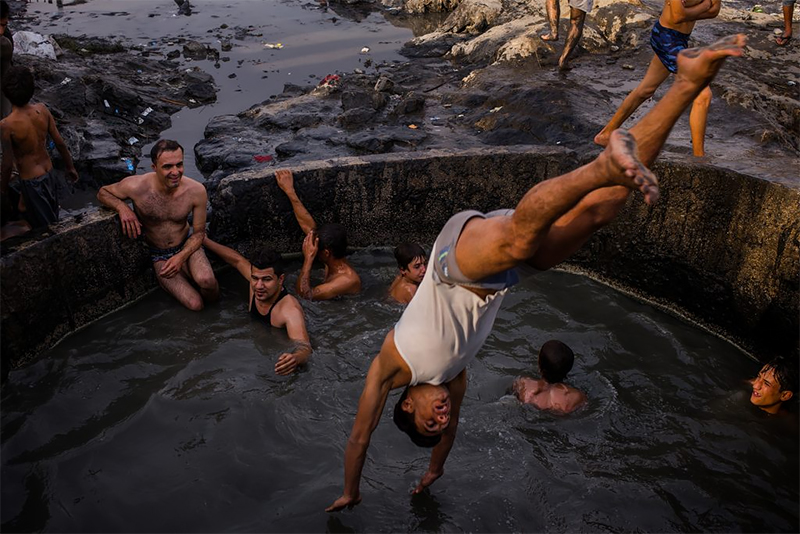
What does that transitional moment - between the end of a conflict and a return to 'normal' life - look like? These images are part an ongoing project on the aftermath of ISIS in Iraq and Syria, exploring the legacy of conflicts that is constantly reshaping the demographics, society, and livelihoods of the people enduring seemingly endless war. It is necessary to explore, and question, how the seeds of future discord - perhaps another war - are sown, and equally necessary to document those who are trying to get by, no matter how harsh the present.Both Mosul and Raqqa were the capitals of ISIS's so-called caliphate, from 2014 until 2017, when the extremist group, who ruled with a murderous regime headed by Abubakr Al Baghdadi, was finally ousted from Raqqa, Syria. A trail of thousands of civilian casualties - either killed by ISIS or by coalition airstrikes - unexploded ordinance, mass graves, and mass destruction of urban areas resulted, and the humanitarian fallout catastrophic. Hundreds of thousands of people remain displaced either within their own country or exiled from it. The war against ISIS was a symptom of a much larger, and longer historical context in which sectarian divides were blown wide open - starting with the U.S. invasion of Iraq in 2003, and the start of the Syrian conflict in 2011. While conflict has consumed both countries for different reasons, the outcomes are often the same: civilians bear the brunt of the burden. With little foreign aid to help both cities rebuild, the civilians have taken it upon themselves either to govern and bring back public works programs (water, electricity, education), or find the money to reopen their shops to earn a living again. In Mosul, just months after it was declared liberated from ISIS by the Iraqi government, daily life seemed to have sprung right back in markets and homes amidst a moonscape of rubble and dust. Children, and women without the mandatory niqabs enforced by ISIS, frequented the theme park by the Tigris River, men played football or went to cafes to smoke, or play snooker in an arcade. All such activities like this were banned and punishable by death under ISIS.
Exhibition: Jacques Langevin
Tiananmen Square: Massacring freedom
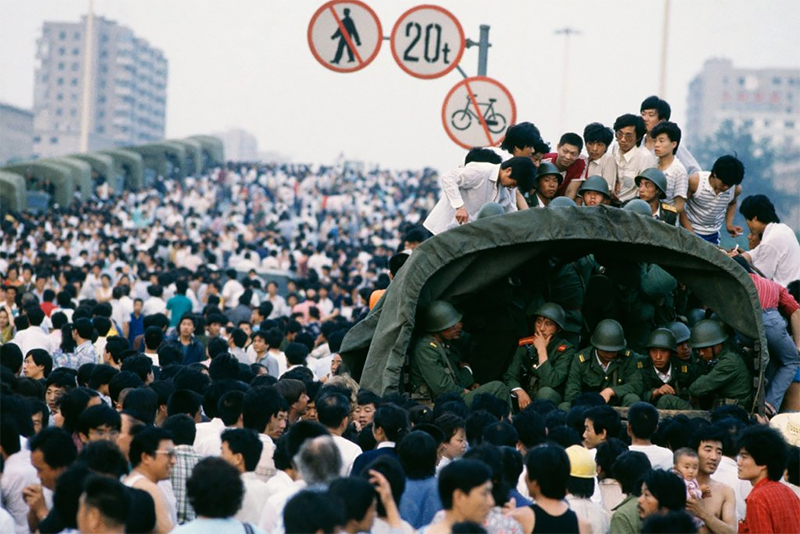
30 years ago young people in China felt a wind of freedom. 30 years ago, during the night of 3-4 June 1989, Li Peng and Deng Xiaoping's army repressed this wish for democracy in a bloodbath, ordering the massacre of thousands of pacifist demonstrators in Tiananmen Square. The student movement had begun in April with the death of reformist leader Hu Yaobang. He had been highly popular with young people in China and his death triggered demonstrations and then the occupation of Tiananmen Square by young Chinese demanding less corruption and more democracy. The movement grew rapidly, the demonstrations began taking place every day and the workers joined in with the students' demands. The students took advantage of Mikhail Gorbachev's historic visit to disrupt government protocol and gain worldwide media attention. So the government called on young conscript soldiers drawn from the provinces and told them to bring an end to this revolutionary movement: however once the students explained their demands to them, soldiers and students began fraternising, contrary to the expectations of the communist ruling powers. After this, the Chinese government wanted to end the movement, stationed regiments of battle-hardened troops in various points around the capital and ordered them to break up the protests. . During the night of 3-4 June the army invaded Tiananmen Square. Tanks and troops destroyed the demonstrators' camps. Armoured vehicles crushed anything in their way including human beings. The students' attempts to build makeshift barricades and throw stones were met with machine gun fire. The People's Army was firing on the people. The number of victims is still unknown today. Less than 300 including soldiers according to China, but actually almost 10,000 people lost their lives. In addition to the victims of this bloody night many leaders, students and witnesses disappeared into government prisons. In 2019, the events which took place 30 years ago in Tiananmen Square are still the greatest taboo in the history of modern China. The ruling powers have imposed a general amnesia on the entire country. Freedom of expression in public and on social media is still controlled, censored, forbidden and repressed.
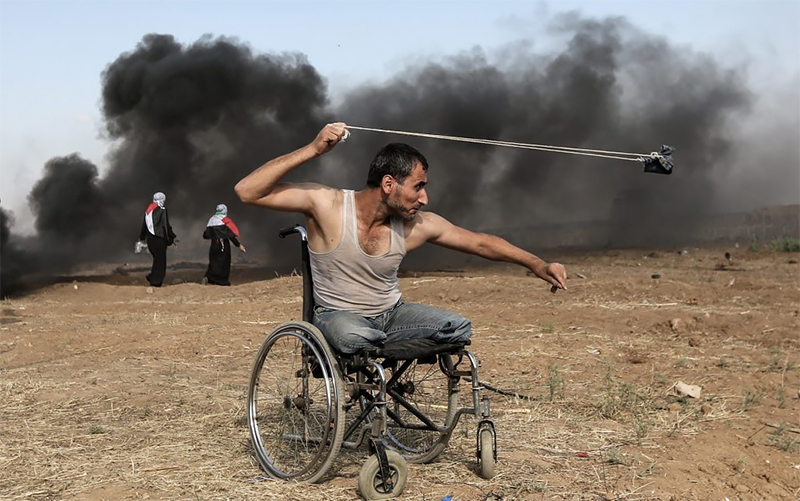
© Mahmud Hams / AFP - Photo Award 2018





